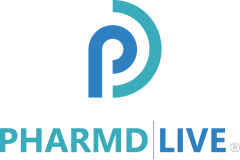What Is Ongentys?
Also known by its generic name, opicapone, Ongentys is a new COMT inhibitor that was approved by the FDA in April 2020 for use in the treatment of off episodes for patients with Parkinson’s disease. Currently, COMT inhibitors that are on the market consist of tolcapone and entacapone, and while both products contain benefits, there are significant drawbacks as well: Tolcapone is highly efficacious, but also results in severe hepatotoxicity which has led to a near complete reduction in its use as a therapy. Entacapone is a much safer alternative, however, its efficacy rate and convenience of dosing scores much lower marks. Owing to these results, the market was ready for a new medication that could deliver the best of both worlds providing greater efficacy without compromising the patient’s safety. Opicapone promises to do just that.
Opicapone was approved through data gathered from the Bi-Park 1 and 2 trials which was determined to show superiority versus placebo as well as non-inferiority with current treatment standard entacapone. One of the most significant benefits seen from this trial was its increased efficacy with once daily dosing, allowing patients to have a decreased daily pill burden while using this therapy alongside their usual levodopa/carbidopa dosing regimen. Lastly, the most common adverse effects determined by the trials were dyskinesia, dry mouth, and constipation, all of which were mild to moderate in severity.
Is This The Real Deal?
The million dollar question is whether this new medication is worth it. Here are a few things to consider when looking to answer this question:
- Currently, the medication is available as a brand name product only, which means it could come with a significant out-of-pocket cost depending on the patient’s insurance and other factors.
- The medication trial was conducted for a patient population suffering from mild to moderate Parkinson’s, and to date, there isn’t enough information available that can provide insight into the benefits for those suffering from a more severe form of the disease.
So Where Does This Leave Us?
Opicapone has shown greater patient improvements when patients are symptomatic (“off periods”) throughout the day. There are those who believe this medication is a great new option and that it will find its place among those suffering from mild to moderate severity level Parkinson’s who are able to obtain the drug. Its greatest benefit is that of decreasing the pill burden and can be beneficial for those not currently on the triple combination entacapone/levodopa/carbidopa regimine.
What Is Parkinson Disease?
Parkinson’s disease is a neurodegenerative disorder that affects the dopamine levels in the brain and results in impaired motor symptoms such as slowness of movement, resting tremor, muscle rigidity, and postural impairment. The cause of this disease is still largely unknown; however, we do know it affects approximately one million people in the United States and comes with a total yearly healthcare cost of about $51.9 billion, double the cost of Parkinson’s disease in previous years and no projections of costs abating in the coming years. The general mechanism of the disease causes the dopamine pathways within the brain to start to degenerate, leading to an overall deficit in dopamine levels, which in turn create the motor problems that are typically associated with a patient with Parkinson’s disease. From this mechanism, we have four major classes of medications that are used in order to treat symptoms and attempt to prevent disease progression:
The first of these classes, and the most popular, is the use of levodopa, which is a dopamine precursor. Combination of levodopa with a decarboxylase inhibitor such as carbidopa allows the drug to pass through the blood brain barrier and be converted to dopamine in order to stimulate the dopamine receptors and mimic normal dopamine levels in the body.
The second class of medication used is the dopamine agonists which consists of pramipexole and ropinirole. These medications act as dopamine and would stimulate the D1 and D2 receptors in the brain to mimic increased dopamine levels in the body.
The third class of medication used is the MAO-B inhibitors which consists of selegiline and rasagiline. These medications inhibit the enzyme MAO-B which works to break down dopamine in the brain. This allows for greater amounts of dopamine to remain in circulation throughout the brain which leads to stimulation of the D1 and D2 receptors.
Finally, the fourth class of medications used is the COMT inhibitors that consist of entacapone, tolcapone, and new agent opicapone. These medications inhibit the catecholamine O methyltransferase enzyme either in the brain or the periphery leading to greater amounts of dopamine or L-dopa respectively to circulate throughout the body and either enter the brain to be converted to dopamine or directly stimulate the dopamine receptors.
How Can PharmD Live Help?
Due to the progressive nature of Parkinson’s disease, patients are constantly having to adjust their medication regimens to keep up with their off periods and ensure symptom management as much as possible. As a result, patients could be taking anywhere from 3-8 doses of their Parkinson’s medications per day, and they could require dose increases or decreases frequently. For this reason, PharmDLive CCM services provide a great resource for PD patients since they would have individualized care ensuring that their doses were personalized to their specific needs as well as a full team of support that could assist in medication adherence and ensuring the patient is properly followed and monitored for adverse effects. Due to the great demand a PD patient requires, CCM services are ideal since the patient will not get lost in the system, but instead, will receive a greater amount of attention in order to ensure optimization of their medication regimen leading to greater control of their Parkinson’s disease.
PharmD Live is a telehealth company on a mission to save lives and improve patient health outcomes. We partner with healthcare entities to provide seamless, collaborative disease management and medication risk management solutions which improve Medicare quality metrics, reduce healthcare costs, decrease physician workload and maximize reimbursement opportunities.
References:
Aminoff MJ. Pharmacologic Management of Parkinsonism & Other Movement Disorders. In: Katzung BG. eds. Basic & Clinical Pharmacology, 14e. McGraw-Hill; Accessed September 30, 2020. https://accesspharmacy-mhmedical-com.ezproxy.ttuhsc.edu/content.aspx?bookid=2249§ionid=175219763
Chen JJ, Dashtipour K. Parkinson Disease. In: DiPiro JT, Yee GC, Posey L, Haines ST, Nolin TD, Ellingrod V. eds. Pharmacotherapy: A Pathophysiologic Approach, 11e. McGraw-Hill; Accessed September 30, 2020. https://accesspharmacy-mhmedical-com.ezproxy.ttuhsc.edu/content.aspx?bookid=2577§ionid=221104123








